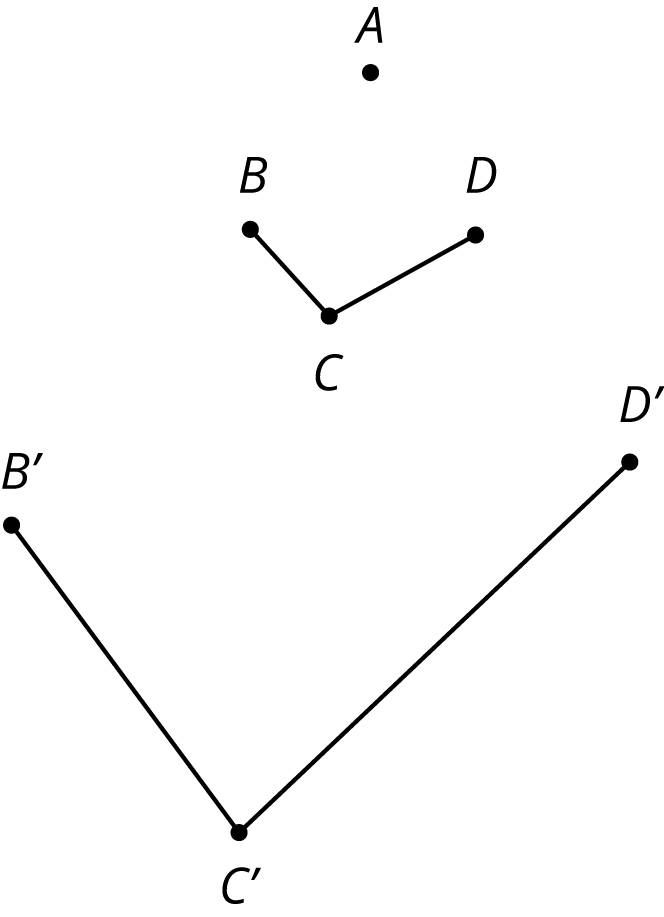Lesson 7
Similar Polygons
Problem 1
Triangle \(DEF\) is a dilation of triangle \(ABC\) with scale factor 2. In triangle \(ABC\), the largest angle measures \(82^\circ\). What is the largest angle measure in triangle \(DEF\)?
\(41^\circ\)
\(82^\circ\)
\(123^\circ\)
\(164^\circ\)
Solution
For access, consult one of our IM Certified Partners.
Problem 2
Draw two polygons that are similar but could be mistaken for not being similar. Explain why they are similar.
Solution
For access, consult one of our IM Certified Partners.
Problem 3
Draw two polygons that are not similar but could be mistaken for being similar. Explain why they are not similar.
Solution
For access, consult one of our IM Certified Partners.
Problem 4
These two triangles are similar. Find side lengths \(a\) and \(b\). Note: the two figures are not drawn to scale.

Solution
For access, consult one of our IM Certified Partners.
Problem 5
Jada claims that \(B’C’D’\) is a dilation of \(BCD\) using \(A\) as the center of dilation.
What are some ways you can convince Jada that her claim is not true?

Solution
For access, consult one of our IM Certified Partners.
(From Unit 2, Lesson 3.)Problem 6
-
Draw a horizontal line segment \(AB\).
- Rotate segment \(AB\) \(90^\circ\) counterclockwise around point \(A\). Label any new points.
- Rotate segment \(AB\) \(90^\circ\) clockwise around point \(B\). Label any new points.
- Describe a transformation on segment \(AB\) you could use to finish building a square.
Solution
For access, consult one of our IM Certified Partners.
(From Unit 1, Lesson 8.)